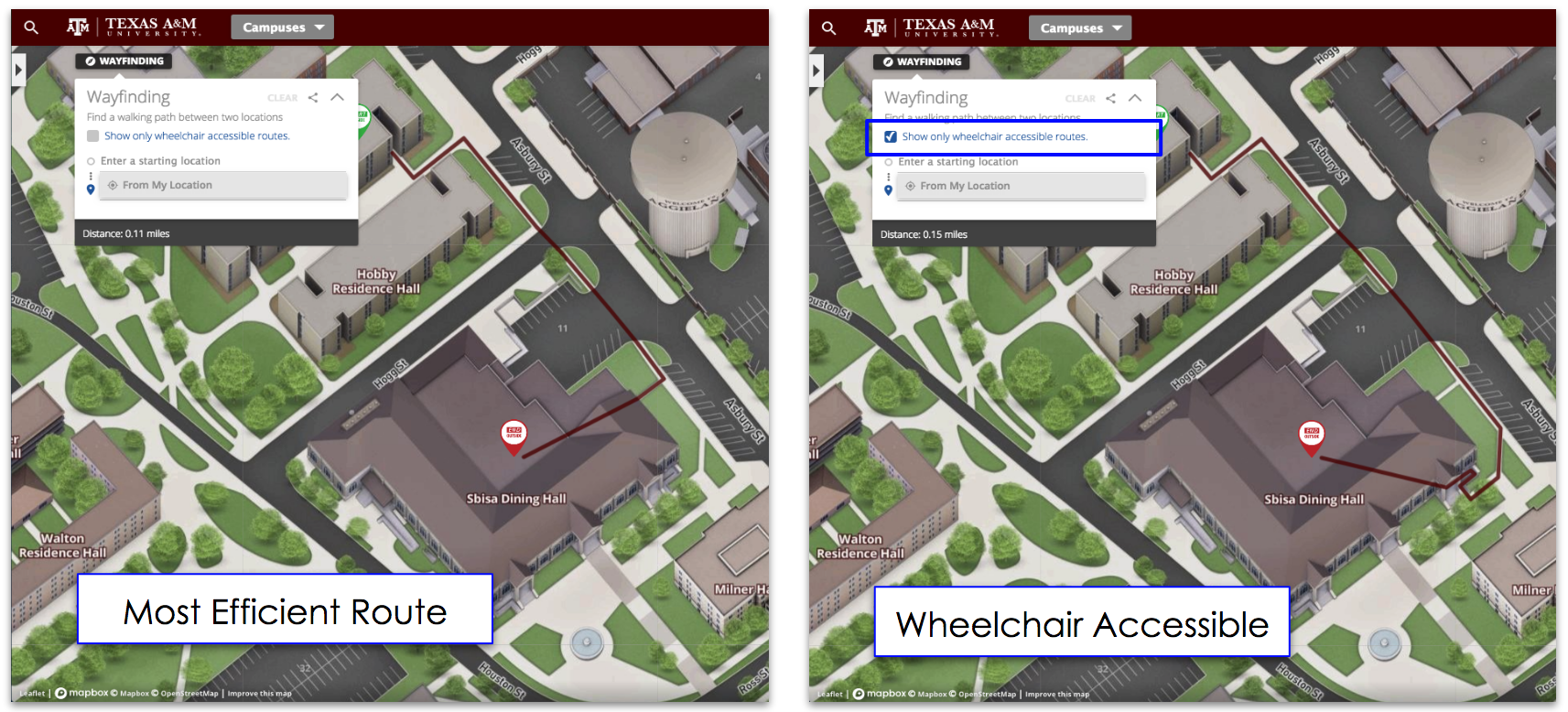From CampusBird Blog
Authentic and entertaining user-generated content (UGC) makes a big impact at colleges and universities because it highlights real campus life. Not only can UGC attract prospective students, but it also enriches the experience of current students and faculty and provides a valuable connection for parents and alumni.
In 2017, UGC will continue to gain traction as an effective marketing tool for universities. With this in mind, admissions professionals can highlight the best aspects of campus life by asking students, faculty, and alumni, to do the storytelling. Admissions professionals can piece together various bits of content to create a coherent narrative that brings the college experience to life. Because who is better at documenting campus life than those living it? This valuable content can be shared on the school’s website, social media outlets, and even on interactive campus maps to help showcase all the school has to offer.
User-Generated Content - Why it’s Important for Universities
What is UGC? Content created and shared by anybody online! Blogs, videos, Tweets, photos, Instagrams, reviews, podcasts, tweets and status updates, etc. For colleges and universities, it is any content created by your students (prospective and current), faculty and staff, alumni, and even parents. comScore reports that brand engagement rises by 28% when consumers are exposed to both professional and user-generated content.
Because UGC comes from real people who use or experience your product (in this case your school, campus and online experiences like a virtual tour), it is more trusted. In fact, Enveritas Group reports that millennials trust user-generated content 50% more than other media. In addition, another report states that 86% of millennials say user-generated content is a good indication of the quality of a product.
Current and upcoming college generations are intricately tied to social media and content. They are digital natives in every sense, and often can rapidly poll peers and get a feel for a product or school in a matter of minutes through texting, YouTube, Google, and social media search.
That said, user-generated content is a key marketing tool for universities trying to help prospective students imagine themselves at your school, in your classrooms, in the dorms, making friends, attending events, and being successful.
How to Implement a User-Generated Content Program
Collecting Content
Ask for the Content!
Display signs that include the hashtag you want to use in dorms, dining halls, the campus store, sporting and other events, and more. Send email newsletters explaining how students, faculty, and alumni can share their school pride and spirit using the hashtag. Share the hashtag everywhere - banners, emails, social media outlets, pamphlets, brochures. Ask for students to submit blog posts for the campus blog. Provide them with guidelines, and have your team moderate the submissions.
Build a Content Calendar
Set up a calendar with weekly and/or monthly themes, like homecoming, studying for finals, parents weekend, sporting events, and other key topics. Share this with students via your website, social channels, and through email newsletters in advance, and ask them to participate using the hashtag with photos, Tweets, Facebook posts, and short videos.
Ask students to write short blog posts or snap quick videos about their day to day life as it revolves around those time themes. They can either share by uploading to the folders, or by using a hashtag.
Incentive Participation
Everyone loves FREE swag and prizes! Give people a reason to contribute content - feature them on the university's social media, website, or newsletter, give them free school gear, give away gift cards to local restaurants. While not always necessary, you can be sure the participation level will increase when there is a prize in sight. Many schools have found success "gamifying" campus exploration through scavenger hunts as well as the integration of Pokemon Go into campus maps.
Organizing Content
Use Shareable Folders
In addition to hashtags (more below), you can create a set of folders in Dropbox, Google Drive, or on your school’s online student portal for contributors to upload photos, videos, articles, personal blog submissions, and other content that may be useful. Keep them organized by categories like sporting events, on-campus dining, homecoming, and more.
Use a #Hashtag
This is the easiest way to track and manage content on social media. For those of you who haven't jumped into the world of hashtags, they are not hard to use! If your school doesn’t already have a handful of hashtags, create some and encourage students to use them in their social posts. Ask prospective and current students to share photos of acceptance letters, campus and student life, and other events and topics using the hashtag. Ask alumni to share photos of their school pride, work opportunities, and alumni events they attend. Ask faculty to highlight unique aspects of campus life from the classroom.
Adelphi University uses the simple hashtag #adelphiuniversity to encourage and collect posts. At the date of this post, they had 6,445 Instagram posts using the hashtag. All you have to do to find posts using the hashtag is visit Twitter, Instagram, or Facebook and type the hashtag into the search bar.
Another example, Allegheny College, created a page on their school website listing their various hashtags. This is a great way to keep students, faculty, and alumni informed of how they can participate (and to avoid any confusion about hashtags in use). On Instagram, one of their popular hashtags is #acgatorgram; the hashtag has over 3,800 posts of students, faculty, and alumni documenting their campus experiences.
In addition, in celebration of their 200th anniversary, Allegheny promoted using the hashtag #allegheny200. They used the hashtag to highlight the school's history and asked students and alumni to post photos with the hashtag. Below, some of Allegheny's alumni show their school spirit using the hashtag.
@alleghenycol Philadelphia alumni doing the Gator Chomp #Allegheny200 pic.twitter.com/jKVLjap3rx
— kb (@kirbybourbon) June 21, 2015
Managing Content
Aside from your own marketing team, you can enlist a few students majoring in the marketing, journalism or other applicable schools to be editors and head-up editorial sourcing and management. Whether it’s editing blogs, or moderating video and photo submissions, this provides an incredibly valuable experience and a nice addition to the resume.
How Universities Integrate User-Generated Content into their Marketing Plan
Student Ambassador Programs
Student Ambassador Programs go beyond the obvious. They are also perfect for connecting current and prospective students. At the University of Waterloo in Ontario, student ambassadors run daily live chats with prospective students, answering questions and relating to the students in a way that regular marketing and the school's admissions office cannot. They also started using the trendy social media platform Snapchat, giving students the opportunity to tell their story via video and photos.
Social Media Ambassador Programs
Taking the student ambassador program social, some schools are initiating student social media ambassador programs. It's important to outline what is expected from student social media ambassadors, and to provide them with guidelines to be successful. Babson College outlines their social media ambassador program, and then asks for students to apply online.
Social Media Ambassador programs are not just for current students; the University of Albany created an Alumni Social Media Ambassador program, relying on those who have gone through the school from start to finish to help promote college life.
The University of Delaware’s Social Media Ambassadors gain access to the official "Blue Hen" Twitter account to document daily campus life, making their Twitter account more “for students, by students." Students focus on specific initiatives and undertake outreach campaigns to attract attention to school programs, functions, and more. Not only does it expand the school’s social reach, it gives ambassadors professional social media and blogging experience and gets them into a variety of events and activities on and off campus.
Let Students be the Stars
Who better to talk to students than other students? Let your students be the starts, and contribute valuable content. Maryville College had one of their students create a tour for their CampusBird interactive campus map highlighting the school’s sustainability efforts.
A political sciences major from the University of Delaware's led a Facebook Live feature covering the inauguration of the 28th president of the school.
In honor of their 125th anniversary, Belmont University recorded 17 stories from 34 people in the Belmont community recounting some of the greatest moments in Belmont’s history. They are sharing the stories on their podcast throughout the year. In addition, they are asking other members of the Belmont community to submit their own stories to possibly be included in the podcast.
The University of Wisconsin-Madison used #UWRightNow to provide a glimpse into the daily lives of students, faculty, alumni, and staff.
Northern Illinois University highlights students, faculty, and staff using the hashtag #peopleofNIU to tell the story of campus and school life, and how these unique individuals contribute to the university. These profiles are posted on Facebook, Instagram, and Twitter.
Implement a Social Campaign Around an Event or Theme
Increase user-generated content by creating a larger social campaign around an event. While students can always contribute content using a hashtag, you can capitalize on participation by implementing a social campaign for a big event, such as homecoming, newly admitted students, campus history, or a big sporting event.
Duke University created a Pinterest board where students and alumni can contribute photos of their school life using #pictureduke. In addition to Pinterest, users posted photos with the hashtag to Instagram - as of this post's publish date, they have over 11,000 posts!
SUNY Plattsburgh created a digital scavenger hunt, asking students to capture images of themselves at all of the iconic locations around campus, and then share them with a hashtag. Their goal was to share the school's history with both current and prospective students.
Indiana University - Purdue University Indianapolis wanted to engage with accepted students, so they launched a campaign asking prospective students to share a photo of them with their acceptance letter using the hashtag #admitted2IUPUI on both Instagram and Twitter.
 Students accepted at IUPUI were asked to share a photo with their acceptance letter and the hashtag #admitted2IUPUI
Students accepted at IUPUI were asked to share a photo with their acceptance letter and the hashtag #admitted2IUPUI
Host Contests to Get UGC on Social Media Outlets
Going back to incentivizing users with prizes, contests are a great way to build up buzz around an event or topic by garnering more participating. Minnesota State University Moorhead offered scholarships to the winners of their #BeADragon campaign. Students enter the contest by tweeting why they want to #BeADragon to @AdmissionsMSUM (the school's official Twitter account). The entries are judged by their creativity in expressing why the student wants to "be a dragon." Tweets can include pictures, videos, graphics, artwork, or even just their written words. Four winners receive a $2,500 scholarship to MSUM.
Integrate User-Generated Content into your Interactive Campus Map
As we’ve discussed, hashtags make it easier to collect, organize, and share content. Use a platform like Tagboard to create a special board that pulls content using a hashtag, including photos, videos, and text from Twitter, Instagram, and Facebook all into one page. The page can live on your website, but you can also embed the content it pulls into your interactive map.
Worried about moderating the content? Platforms like Tagboard allow you to choose to moderate content before it gets posted on the page. For example, use a unique hashtag for football game days, and encourage students and alumni to use it to share photos and videos of the day. On your interactive campus map, place a pin on the football stadium, and integrate the code for your Tagboard (your CampusBird representative can help you with this if needed). When site visitors click on the pin, a window will pop open and showcase the content using the hashtag from game days.
Another way to collect photos is using a Pinterest board. Create a board where others can contribute photos and content. You can create a live feed of your board on your website, as well as in your campus map as outlined above.
Ask students to help create short videos about campus. At Hofstra University, they integrated campus tours using student-generated YouTube videos of the school onto their interactive campus map. The videos show highlights of campus including a walking tour of the dining hall, conversations with faculty, and accounts of student life.
Engage Alumni
Alumni are some of your best advocates and influencers. Keeping them connected and their enthusiasm thriving is important to any school's marketing plan, so don't forget to consider them when sourcing user-generated content. The University of Missouri Alumni Association created a photo app on their website, called "Mizzou From You," and then ran various contests to promote participation. Alumni can visit the page and upload photos directly to the page. The Mizzou Alumni Association's site traffic increased by 15%, and had over 30,000 unique visitors!
 "Mizzou From You" - the university's Alumni Association created a special page for alumni to share photos on.
"Mizzou From You" - the university's Alumni Association created a special page for alumni to share photos on.
They also ask alumni to tag content on social outlets with #Mizzou and other hashtags for various alumni events. Their Instagram page is mostly re-shares of alumni photos that have been posted to the site using the hashtag.
More higher-ed marketers are leveraging user-generated content to attract prospective students and to create enthusiasm and excitement around the college for current students and alumni. Taking it a step further and bringing user-generated content into your interactive campus map is another great and innovative way to bring your school to life. Regardless of how you do it, integrating UGC into your online campus marketing is crucial to attracting your incoming classes.
Save
Save
Save
Save
Save
Save
Save
Save
Save
Save
Save
Save
Save
Topics: Share Your Place







